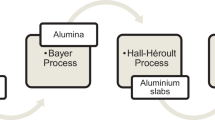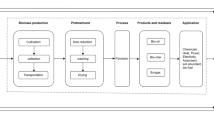Abstract
A prior prediction of oxides of nitrogen, i.e., NOX (sum of NO and NO2), in diesel exhaust while treating with electric discharge-based nonthermal plasma (NTP) technique, would assist the researchers in planning the resources required for the treatment. In this present study, the performance of different regression-based models, i.e., linear, support vector regression and Gaussian process regression (GPR), has been analyzed for predicting the NOX concentrations based on the values of five dominating parameters of the NTP treatment. Experiments have been conducted and collected a dataset of 4032 number of input–output pairs to be used for training and testing of the regression models. The performances of these models have been assessed while testing them for the unseen set of data. A comparison of root-mean-square error (RMSE) has been made, where Matern 3/2 type of GPR model has been found to be the best among all the considered models with an RMSE of 1.86 ppm for a test data of 1210 sets. The model is shown to perform consistently well even when the test data are increased to 50% of total data. Regression analysis shows that the NOX can be predicted with very good accuracy using the Matern 3/2 type of GPR model.










Similar content being viewed by others
References
Allamsetty S, Mohapatro S (2018a) Prediction of NOX concentration in nonthermal plasma-treated diesel exhaust using dimensional analysis. IEEE Trans Plasma Sci 46:2034–2041
Allamsetty S, Mohapatro S (2018) Prediction of NO and NO2 concentrations in NTP treated diesel exhaust using multilayer perceptrons. In: 10th International conference on applied energy, Hong Kong
Allamsetty S, Mohapatro S (2018) Prediction of NOX concentrations in diesel exhaust with NTP treatment using different types of FLANNs. In: International symposium non-thermal/thermal plasma pollution control technology & sustainable energy, Italy
Azzam M et al (2018) Application of evolutionary neural networks and support vector machines to model NOx emissions from gas turbines. J Environ Chem Eng 6:1044–1052
Bhattacharyya A, Rajanikanth BS (2013) Performance of helical and straight-wire corona electrodes for NOx abatement under AC/Pulse energizations. Int J Plasma Environ Sci Technol 7:148–156
Bin Y, Zhongzhen Y, Baozhen Y (2006) Bus arrival time prediction using support vector machines. J Intell Transp Syst 10:151–158. https://doi.org/10.1080/15472450600981009
Caywood MS et al (2017) Gaussian process regression for predictive but interpretable machine learning models: an example of predicting mental workload across tasks front. Hum Neurosci 10:647. https://doi.org/10.3389/2016.00647
Cui C, Fearn T (2017) Comparison of partial least squares regression, least squares support vector machines, and Gaussian process regression for a near infrared calibration. J Near Infrared Spectrosc 25:5–14
Flagan RC, Seinfeld JH (1988) Fundamentals of air pollution engineering. Prentice Hall, New Jersey
Huang C, Wang L (2017) Gaussian process regression-based modelling of lithium-ion battery temperature-dependent open-circuit-voltage. Electron Lett 53:2–3
Jasmin K, Bhattacharyya A, Rajanikanth BS (2015) Prediction of NOX removal efficiency in plasma treated exhaust: a dimensional analysis approach. In: 3rd ISNPEDADM, new electrical technology environment
Lee SI et al (2016) A prediction model for functional outcomes in spinal cord disorder patients using gaussian process regression. IEEE J Biomed Heal Inform 20:91–99
Li X, Li X, Yuan D, Guo Y (2017) Using least squares support vector machine to predict the maximum ground surface settlement caused by shield tunneling the electron. J Geotech Eng 22:613–626
Liu B et al (2016) A novel optimal support vector machine ensemble model for NOX emissions prediction of a diesel engine. Measurement 92:183–192
Mohapatro S, Rajanikanth BS (2011) Portable hvac and pulsed plasma sources for control of NOx in diesel engine exhaust. IEEE Trans Dielectr Electr Insul 18:1821–1828
Mohapatro S et al (2017) Study of nano second pulse discharge based nitrogen oxides treatment using different electrode configurations. High Volt 2:60–68. https://doi.org/10.1049/hve.2017.0011
Mok YS, Koh DJ, Shin DN, Kim KT (2004) Reduction of nitrogen oxides from simulated exhaust gas by using plasma-catalytic process. Fuel Process Technol 86(3):303–317
Mukherjee DS, Rajanikanth BS (2016) DBD plasma based ozone injection in a biodiesel exhaust and estimation of NOx reduction by dimensional analysis approach. IEEE Trans Dielectr Electr Insul 23:3267–3274. https://doi.org/10.1109/tdei.2016.005919
Mukherjee DS, Rajanikanth BS (2019) Prediction of variation of oxides of nitrogen in plasma–based diesel exhaust treatment using artifcial neural network. J Environ Sci Technol, Int. https://doi.org/10.1007/s13762-019-02242-5
Qiu Z, Ruan J, Huang D, Pu Z, Shu S (2015) A prediction method for breakdown voltage of typical air gaps based on electric field features and support vector machine. IEEE Trans Dielectr Electr Insul 22:2125–2135
Rajanikanth BS, Srinivasan AD, Subhankar DAS (2005) Enhanced performance of discharge plasma in raw engine exhaust treatment-operation under different temperatures and loads. Plasma Sci Technol 7(4):2943–2946
Rasmussen CE, Williams CKI (2006) Regression. Gaussian processes for machine learning, vol 2. The MIT Press, Cambridge, pp 7–32
Roslan NA, Buntat Z, Sidik MAB (2013) Application of dimensional analysis for prediction of NOX removal. In: IEEE 7th international power engineering and optimization conference, Langkawi, Malasiya, pp 218–222
Saavedra HM et al (2007) Modeling and experimental study on nitric oxide treatment using dielectric barrier discharge. IEEE Trans Plasma Sci 35:1533–1540
Samui P, Sitharam TG (2009) Application of least squares support vector machine in seismic attenuation prediction. ISET J Earthq Technol Tech Note 46:147–155
Shabri A, Suhartono (2012) Streamflow forecasting using least-squares support vector machines. Hydrol Sci J 57:1275–1293
Singleton DR et al (2009) Compact pulsed-power system for transient plasma ignition. IEEE Trans Plasma Sci 37:2275–2279. https://doi.org/10.1109/tps.2009.2024672
Stegle O et al (2008) Gaussian process robust regression for noisy heart rate data. IEEE Trans Biomed Eng 55:2143–2151
Tang Z, Zhang H (2018) Modeling NOx emission of coal-fired boiler with differential evolution optimized least square support vector machine. In: Chinese control decision conference, pp 3364–3367
Vapnik V (1995) The nature of statistical learning theory. Springer, New York
Wang T et al (2012) Effect of reactor structure in DBD for nonthermal plasma processing of NO in N2 at ambient temperature. Plasma Chem Plasma Process 32:1189–1201. https://doi.org/10.1007/s11090-012-9399-3
Acknowledgement
This research did not receive any specific Grant from funding agencies in the public, commercial, or not-for-profit sectors.
Author information
Authors and Affiliations
Corresponding author
Ethics declarations
Conflict of interest
The authors declare that they have no conflict of interest.
Additional information
Communicated by Josef Trögl.
Rights and permissions
About this article
Cite this article
Allamsetty, S., Mohapatro, S. & Puhan, N.B. Regression-based models for prediction of oxides of nitrogen in diesel exhaust with electric discharge-based treatment. Int. J. Environ. Sci. Technol. 17, 2731–2742 (2020). https://doi.org/10.1007/s13762-019-02616-9
Received:
Revised:
Accepted:
Published:
Issue Date:
DOI: https://doi.org/10.1007/s13762-019-02616-9




